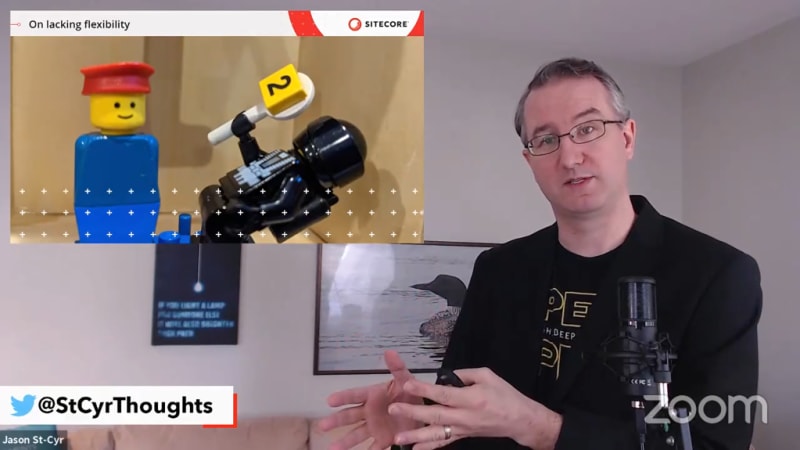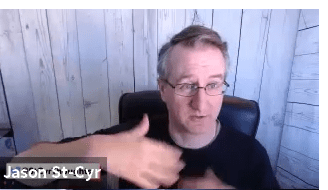I’m not sure about everybody else, but since we’ve switched to doing a lot of virtual events I have really noticed how easily distracted my eyes are while I’m presenting. It’s important for engaging with your audience to make eye contact with the camera, but keeping focus on the camera while going through a presentation can be tough, and it can carry over to recording videos that you plan on sharing later. I’ve found a few things that work for me, so here are 4 tips I use to try to do better!
Tip #1: Prepare for it like an in-person talk
My first suggestion is ‘practice’. Just like an in-person live talk, try to run through it a few times so you have your script in your head. You don’t need to be word-for-word on delivery, but after practicing you will know what to say and can run through it off the top of your head with minor reminders in your notes.
Just like a talk, you wouldn’t have your full script in front of you and by reducing it to a few bullets this will make it easier for you to look down for a reminder, and then continue talking to the camera.
The downside here is that preparation time is much higher as you try for a ‘one take wonder’ (which usually takes multiple takes)
If you have a short video, you can probably do this. If you are recording a 40-minute presentation as one long shot, this might be tough to do.
Tip #2: Micro editing
A very popular style now is to have a lot of clips and edits, fast transitions, in videos. If you don’t mind having some cuts in your camera feed, this opens up more options to you. You can film it piece by piece, or at least edit it that way. In this model, you look at what you want to say (a sentence or two or whatever you can hold in your head) and then you record that part until you are happy with it. Then move to the next piece.
This is similar to doing a talk, but takes advantage of the medium and the fact it is not live. More editing time will be required to stitch all the parts together, but as a speaker this allows you to deliver smaller parts of the talk at a time and focus your eyes on the camera.
Tip #3: Teleprompters/Script behind camera
I have only used this approach with live sessions, not for offline recording, but the technique still applies. A lot of folks like having a teleprompter up there right behind the camera, with the full script. It doesn’t have to be a teleprompter (I don’t have one), just a screen that is big enough to hold your script for the current piece you are recording and can be positioned behind the camera.
With this approach it appears as if you are looking at the camera, but you are actually reading off something behind it. I do have trouble getting this set up right, though. It always looks a little bit off. For a recent conference I did, I made sure to stand and positioned myself looking down slightly at the camera so that it wasn’t as obvious that I was looking down at slide notes.
In this screen capture from that event, I’m checking my notes for the key notes for the next section. With close inspection you can see the eyes aren’t directly on the camera, but I thought it was pretty close!
Tip #4: Eliminate distractions that are away from the camera
For me, I find visual distractions readily catch my eye and impact my ability to focus on the camera. I have a really hard time with this because I easily get distracted by a moving thing on the screen (like a demo I’m narrating, or if my camera view is visible). I try to hide my own camera view if possible, after I’ve set it up. Some people suggest putting something up near the camera that has a face so you look at that part (like a sticky note with a smiley face).
This capture is from a recent user group presentation I did. You can see how my eyes are looking off at the Zoom display and not my camera. I think I watched that most of the presentation… If you have this same challenge, moving it as close to the camera is helpful.
Wrapping it all up
Whichever method or tips work for you, the end goal is that you want your eyes looking into the camera a good portion of the time so that you can connect with your audience. It always looks better if your edited video doesn’t look like you are reading off a script!








Top comments (0)